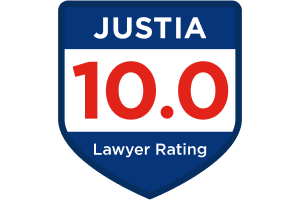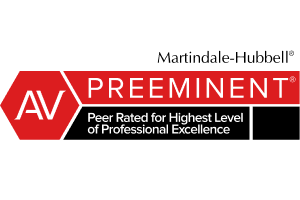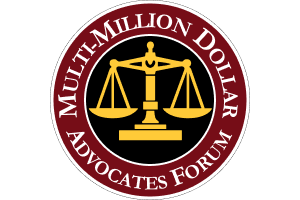The Evolution Of Daubert & the Admissibility Of Expert Witness Testimony
Daubert & The Admissibility Of Expert Witness Testimony
The Evolution Of Daubert & The Admissibility Of Expert Witness Testimony: What’s Next?
Trial Magazine, December 2000
By: Ira H. Leesfield
Litigators beware. The Supreme Court has once again tinkered with the rules and standards pertaining to the admissibility of expert testimony. Most recently, the Supreme Court held in Weisgram v. Marley Company(1) that appellate courts have the power, under Federal Rule of Civil Procedure 50(a), to direct a district court to enter judgment notwithstanding the verdict against the jury-verdict winner should the appellate court determine that admitted expert testimony was in fact unreliable and inadmissible under Daubert v. Merrell Dow Pharmaceuticals, Inc.(2)
Weisgram is the latest decision resulting from the Supreme Court’s 1993 ruling in Daubert which eliminated 70 years of common law governing the admissibility of expert testimony and placed the judge in the role of “gatekeeper,” to determine the admissibility of such testimony. Unfortunately, Daubert raised more questions than it answered. So much so, that in recent years, the Supreme Court has on two, and now three occasions, attempted to clarify its ruling. First, in 1997, in General Electric Co. v. Joiner(3), the Supreme Court ruled that appellate courts, when reviewing a trial court’s decision to admit or exclude expert testimony under Daubert, should apply an abuse of discretion standard of review rather than a stringent standard of review of the trial court’s decision. Then in 1999, the Supreme Court in Kumho Tire Company, Ltd., v. Carmichael(4) held that the admissibility requirements of Daubert and Rule 702 of the Federal Rules of Evidence, apply to all experts providing testimony at trial, not just experts relying on novel scientific theories as had been the case for the prior seven decades.
Currently, and in light of Daubert, Joiner, and Kumho, the Advisory Committee on the Federal Rules of Evidence has proposed amendments to Rule 702 which are scheduled for release in December of this year. The amendments, which are discussed within, would essentially incorporate the Supreme Court’s recent decisions into the language of the rule and the committee notes following the rule. The Advisory Committee cites the disparate treatment of the Rule by the district courts in recent years as the catalyst for the change and hopes that the amendments will clarify the Rule and provide uniformity throughout the country.(5)
Frye and the Origins of Debate
Courts have struggled with the task of determining the reliability of expert testimony for the better part of the 20th Century. In 1923, the Circuit Court of Appeals for the District of Columbia developed the first test for determining the reliability of expert testimony. The court in Frye v. United States,(6) held that in order for novel scientific evidence to be admissible, the profferor must establish that the expert testimony, and the techniques used by the expert to generate his or her results, have been generally accepted as reliable in the scientific community. Specifically, the court held that:
Just when a scientific principle or discovery crosses the line between the experimental and demonstrable stages is difficult to define. Somewhere in this twilight zone the evidential force of the principle must be recognized, and while courts will go a long way in admitting expert testimony deduced from a well-recognized scientific principle or discovery, the thing from which the deduction is made must be sufficiently established to have gained general acceptance in the particular field in which it belongs.(7)
The “general acceptance test” was plagued with problems from the outset. Critics argued that courts often manipulated the level of general acceptance necessary to find reliability, thereby controlling the admissibility of evidence.(8) In other instances, it was alleged that courts would redefine the “scientific community” so as to control the admission or exclusion of evidence.(9) However, the complaint most commonly voiced was that the “general acceptance” test was too rigid and inflexible, excluding evidence that should be admitted as reliable and relevant. Essentially, critics pointed out that no matter how relevant or reliable the scientific principle, the evidence and opinions would not be admitted until the scientific principles had achieved “general acceptance.”
The attack on the Frye test escalated in the years following the 1975 adoption of the Federal Rules of Evidence. Proponents for the elimination of the Frye test argued that the Federal Rules of Evidence superceded Frye and were void of any references as to the general acceptance standard. Moreover, according to commentators the Rules purportedly eliminated common law principles upon codification.
In 1993, the debate over Frye reached a climax when the United States Supreme Court granted certiorari in Daubert v. Merrell Dow Pharmaceuticals, Inc. The petitioners in Daubert were two minor children and their parents who alleged that the children’s serious birth defects had been caused by the mother’s prenatal ingestion of Bendectin, a prescription drug marketed by the respondent. Petitioner’s experts concluded that the Bendectin likely caused the birth defects. The trial court, however, determined that the evidence presented by the petitioner’s experts did not meet the applicable “general acceptance” standard for admission. The Court of Appeals, citing Frye agreed. The Supreme Court granted certiorari and reversed, holding that the adoption of the Federal Rules of Evidence superseded the Frye test. Specifically, the Court stated that “no common law of evidence remains,(10) and nothing in the rules “establishe[s] ‘general acceptance’ as an absolute prerequisite.”(11) Moreover, the Court opined that the rigid “general acceptance requirement of Frye was “at odds with the liberal thrust of the Federal Rules and their general approach of relaxing the traditional barriers to opinion testimony.(12)“
Proponents of the Frye test alleged that this new ruling would open the floodgates and unfounded and unreliable evidence would pour through, confusing and misleading jurors and confounding the equitable administration of justice. The Supreme Court addressed these concerns by levying the task of managing the admission of evidence on the trial judge. The Court opined that the trial judge would assume the role of “gatekeeper,” allowing for the admissibility of reliable scientific evidence and excluding less reliable evidence.
Although the Court failed to establish a definitive list of factors for the determination of reliability, the Court did provide a number of criteria to be used when determining the admissibility of scientific evidence. Those criteria include:
1. Whether the theory can be tested or falsified;
2. Whether the theory or technique has been subjected to peer review and publication;
3. The potential rate of error;
4. The existence and maintenance of standards controlling the technique’s operation.(13)
The Supreme Court granted certiorari in Daubert to address what critics and commentators alleged was an inflexible and problematic test for determining the admissibility of expert evidence. However, despite the Courts attempt to craft a series of criteria that would “liberalize” the admission of expert testimony and evidence, the Court’s ruling in Daubert has resulted in arguably more conflict and confusion. The applicability of the Daubert opinion as well as its interpretation, has been the subject of extensive controversy and debate amongst commentators and the courts. Many commentators allege that Daubert is an incomplete case that failed to accomplish what it set out to accomplish;” i.e. encourage more liberal admissibility of expert witness evidence.”(14) Rather, commentators argue that Daubert “created a more stringent test for expert evidence admissibility…”(15)
Critics of Daubert point to several flaws in the ruling. First, many courts have applied the four criteria espoused in Daubert with a rigid and inflexible mentality. In these courtrooms expert testimony must meet each of the four categories or else the evidence will be excluded. Other courts have applied Daubert only to scientific expert witnesses despite the contention that the Supreme Court intended to extend Daubert’s principles to all expert testimony. (16) In 1999, the Supreme Court addressed both of these issues in Kumho Tire Company, Ltd., v. Carmichael.(17)
At issue in Kumho, was the testimony of an expert in tire failure analysis hired by the plaintiffs to opine that the blow-out of the tire which killed one passenger and severely injured the other occupants of the vehicle, was caused by a defect in its manufacture or design. The expert’s opinions were primarily based on his skill and extensive experience in the field rather than scientific principles. The defendant argued that the expert’s testimony relied on methodology that failed to meet Rule 702’s reliability requirement. Applying the Daubert factors to the evidence, the District Court ruled that the testimony was inadmissible as it failed to meet the reliability criteria espoused in Daubert.(18) On appeal the Eleventh Circuit reversed. The appellate court held that “the Supreme Court in Daubert explicitly limited its holding to cover only scientific principles,” rather than “skill-or experience based observation.”(19)
The Supreme Court granted certiorari and held that ” Daubert’s general holding- setting forth the trial judge’s general ‘gatekeeping’ obligation- applies not only to testimony based on ‘scientific knowledge,’ but also to testimony based on ‘technical’ and ‘other-specialized’ knowledge.”(20) Furthermore, the court opined, “[t]he test of reliability is ‘flexible,’ and Daubert’s list of specific factors neither necessarily nor exclusively applies to all experts in every case.”(21) In fact, the Court states, that Daubert makes it clear that the list of factors for determining admissibility does not constitute a ‘definitive checklist or test.”(22) The criteria was “meant to be helpful, not definitive.”(23)
Significantly, the Kumho decision grants trial courts broad discretion in determining the reliability of expert testimony, which clarifies the Supreme Court’s earlier decision in General Electric Co. v. Joiner(24) In Joiner, the plaintiff’s experts testified that plaintiff’s lung cancer could have been caused by polychlorinated biphenyls (PCBs) that were present in his workplace. The district court granted summary judgment on defendant’s motion to exclude the testimony of the experts. The Court of Appeals for the Eleventh Circuit reversed.(25) It held that “[b]ecause the Federal Rules of Evidence governing expert testimony display a preference for admissibility, we apply a particularly stringent standard of review to the trial judge’s exclusion of expert testimony.”(26) The Supreme Court granted certiorari and held that the court of appeals erred in applying a stringent standard of review. The Court recognized the trial court’s broad discretion in determining the admissibility of expert testimony and held that the trial court’s decision should be reviewed on an abuse of discretion standard.(27)
Despite Kumho’s significant steps toward clarifying the trial court’s role in the admission of expert testimony, Kumho still left unanswered the extent of the appellate courts role in reviewing decisions of the trial courts. Specifically, the district courts were in conflict as to whether an appellate court when reversing an evidentiary decision on expert testimony must remand the case for a new trial or whether they may direct the trial court to enter a judgment notwithstanding the verdict. The Court addressed this question earlier this year in Weisgram v. Marley Company(28)
Bonnie Weisgram died of carbon monoxide poisoning during a fire in her home. At trial, Plaintiff’s experts testified that a defect in the heater was a causal connection to the fire. On appeal the district court held that the evidence supporting the product defect charge was speculative and should not have been admitted. The court then concluded that the remaining evidence was insufficient to support a jury verdict for Weisgram. Although recognizing its discretion to remand the case for a new trial, the appellate court rejected the contention that it was required to do so, and directed judgment as a matter of law for the defendants.(29) The Supreme Court affirmed the decision and held that appellate courts have the power, under Federal Rule of Civil Procedure 50(a), to reverse the decision of the district court and direct the court to enter judgment against the jury-verdict winner should the appellate court determine that admitted expert testimony was in fact unreliable and inadmissible under Daubert v. Merrell Dow Pharmaceuticals, Inc.(30)
Proposed Amendment to Rule 702
In light of the recent Supreme Court decisions and the disparate treatment of Rule 702 and the admission of expert testimony by the district courts, the Advisory Committee for the Federal Rules of Evidence deemed it necessary to amend Federal Rule of Evidence 702. The proposed amended reads as follows: Rule 702. Testimony by Experts(31)
If scientific, technical, or other specialized knowledge will assist the trier of fact to understand the evidence or to determine a fact in issue, a witness qualified as an expert by knowledge, skill, experience, training, or education, may testify thereto in the form of an opinion or otherwise-; if (1) the testimony is based upon sufficient facts or data, (2) the testimony is the product of reliable principles and methods, and (3) the witness has applied the principles and methods reliably to the facts of the case.
As the advisory committee notes indicate, the amendment affirms the trial court’s role as gatekeeper, as espoused in Daubert, and consistent with Kumho, provides that all types of expert testimony are subject to an admissibility determination by the trial court based on evidence of reliability. Similarly, the rule acknowledges that the admissibility criteria espoused by Daubert are non-exhaustive nor exclusive.
The structure of the rule appears to require that a court find that each prong of the Rule be satisfied before evidence will be admitted. However, all three prongs are essentially part and parcel of one another.(32) Indeed, the Supreme Court in Kumho applied all three prongs in their ruling, and as one commentator noted, “did what should be done in all cases– it looked at all three requirements as if there were one requirement.(33) Whether other courts follow-suit, only time will tell.
As with all opinions and rule changes there are several potential problems with the proposed amendment to Rule 702. Trouble spots include(34):
- The proposed rule and the committee still fail to define what is scientific, technical, or specialized knowledge. The lack of an adequate definition leaves the determination to the trial judge, and in essence assumes that the trial judge has adequate knowledge to make this determination.
- A potential problem exists when counsel attempt to introduce evidence by arguing that it is not scientific, technical, or specialized. For instance, if counsel attempts to argue that the expert testimony is practical knowledge, how is the trial court to determine admissibility.
Meeting the Evolving Challenges of Daubert(35)
In the wake of the Supreme Court’s recent decisions and the imminent amendments to Rule 702, “litigators must prepare their cases with an understanding that heightened scrutiny of all but the most non-controversial expert testimony is likely.”(36) The following areas and issues should be kept in mind by all trial attorneys handling technically complex cases.
a. Initial Case Screening
Case screening takes on new importance in the post- Kumho era. “Evaluation must include not just whether an expert’s opinion supports the plaintiff’s theory, but an assessment of how the expert arrived at his or her opinion.”(37) Kumho provides the standard for this analysis. An expert should be expected to employ the “same level of intellectual rigor that characterizes the practice of an expert in the relevant field.”(38)
b. Discovery
Trial attorneys should use the broad scope of the discovery rules to garner the information needed to support an expert’s methodology. Areas that should be delved into include:
1) Analytical methods employed by the opposing party and its in-house and retained experts, both in the ordinary course of business and in litigation;
2) Test data, field data, and analytical methods;
3) Research conducted in-house
c. Selection of Experts
Naturally, in the wake of Kumho, expert’s can no longer be selected based solely on how they will testify or on the basis of their credentials. A retained expert must be able and willing to support his conclusions and methods.
d. Scope of the Expert’s Work
In order to safely navigate through Daubert-Kumho, your expert should be prepared to support his or her conclusion with a written report and/or brief in addition to deposition and trial testimony. Validating your expert’s opinions may require research into your own expert’s methodologies.(39)
e. Litigation Testing and Research
Beyond researching and compiling literature and data that supports your experts analysis and methods, it may be prudent to conduct your own testing of the expert’s hypothesis. Testing poses monetary problems, but may be necessary in certain cases.
f. Preparation of the Expert for Deposition
By the time you reach this point, you and your expert should be reasonably prepared to counter a Daubert-Kumho challenge. However, many experts are not prepared to explain and justify their methods, thus trial attorneys should work with the expert prior to his or her deposition. The expert must be able to support not only his or her conclusions, but also the methodology used to reach those conclusions.(40)
g. Defense Expert Deposition
First and foremost, attack the defendant’s expert’s methodologies and conclusions. The same rules apply to the opposing side. At the same time use the defendant’s expert to support your own expert’s analytical approach. Have the expert acknowledge the use of your expert’s approach and techniques.
1. Weisgram v. Marley Company, 120 S. Ct. 1011 (2000).
2. Weisgram, 120 S. Ct. at 1017.
3. General Electric Co. v. Joiner, 118 S. Ct. 12 (1997).
4. Kumho Tire Co., LTD v. Carmichael, 119 S. Ct. (1999).
5. Josue Vazquez, “Assisting the Trier of Fact: Rule 702 of the Federal Rules of Evidence and its Proposed Amendment,” 24 Rutgers L. Rec. 2 (2000).
6. Frye v. United States, 293 F. 1013 (D.C. Cir. 1923).
7. Id at 1014.
8. Josue Vazquez, “Assisting the Trier of Fact: Rule 702 of the Federal Rules of Evidence and its Proposed Amendment,” 24 Rutgers L. Rec. 2, 5 (1999). citing Miller, Paul S., Rein, Bert W., “Judges Should Resolve Scientific Disputes in Toxic Tort Litigation,” Legal Backgrounder July 24, 1998.
9. Id. at 5, citing Hasko, Judith A., Daubert v. Merrell Dow…: Flexible Judicial Screening of Scientific Expert Evidence Under the Federal Rules of Evidence 702, 1995 Wis. L. Rev. 479, 480.
10. Daubert, 113 S. Ct. at 2794.
11. Id. at 2794.
12. Id.
13. Id. at 2796-2797.
14. Michael H. Graham, “The Expert Witness Predicament: Determining “Reliable” Under the Gatekeeping Test of Daubert, Kumho, and Proposed Amended Rule 702 of the Federal Rules of Evidence,” 54 Univ. of Miami L. Rev. 317, 321 (Jan. 2000).
15. Id.
16. Carmichael v. Samyang Tire, 131 F.3d 1433 (11th Cir. 1997) rev’d, 119 S. Ct. 1167 (1999).
17. Kumho Tire Co., LTD v. Carmichael, 119 S. Ct. (1999).
18. Carmichael v. Samyang Tires, Inc., 923 F. Supp. 1514, 1521-1522 (S.D. Ala. 1996).
19. Carmichael v. Samyang Tire, Inc., 131 F. 3d 1433, 1435 (11th Cir. 1997).
20. Graham, supra n. 14; see Kumho Tire Co., 119 S. Ct at 1174.
21. Kumho Tire Co., 119 S. Ct. 1171.
22. Id at. 1175.
23. Id. at 1175
24. General Electric Co. v. Joiner, 118 S. Ct. 512 (1997).
25. 78 F.3d 524 (1996).
26. Id at 529.
27. Joiner, 118 S. Ct. at 517 (1997).
28. Weisgram v. Marley Company, 120 S. Ct. 1011 (2000).
29. 169 F.3d 514, 517, 518-522 (1999).
30. Weisgram, 120 S. Ct. at 1017.
31. Pursuant to the Rules Enabling Act, the earliest possible date that the proposed amendment to Rule 702 could become effective is December 1, 2000.
32. Graham, supra n. 14, at 349.
33. Id. at 351.
34. Id..
35. The categories and this section in general are garnered largely from the Trial Magazine article written by Stuart A. Ollanik, “Expert Testimony: Defeating the Kumho Challenge,” Trial 28, 30 November 1999.
36. Stuart A. Ollanik, “Expert Testimony: Defeating the Kumho Challenge,” Trial 28, 30 November 1999.
37. Id. at 30.
38. Id.
39. Id. at 33.
40. Id.







